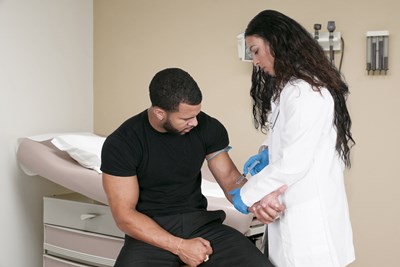Staphylococcus bacteria are a common bacteria that resides on the skin and inside the nose of one in three people in the United States. Even though most carriers of staph will not become infected by it, it can become a problem if it enters your body through an open wound or cut. Staph bacteria are the most common cause of skin infections in the United States.
Most of the time, staph infections can be treated with antibiotics. However, there are some strains of staph that have mutated and developed a resistance to most traditionally used antibiotics. These strains of antibiotic-resistant staph are referred to as MRSA (methicillin-resistant Staphylococcus aureus). Since it was discovered in 1961, MRSA has developed a resistance to methicillin, amoxicillin, penicillin, oxacillin, and many more commonly prescribed antibiotics.
Causes
You can get MRSA by making direct skin-to-skin contact with someone who carries the bacteria on their skin. However, you don’t have to make direct contact with someone to contract it. Staph bacteria are also able to survive on inanimate objects as well, such as towels, razors, athletic equipment, and bed linens. This makes it even easier to transmit the bacteria to other people.
MRSA infections are most common among people who have weak immune systems and reside in nursing homes, hospitals, or other health care centers. It is common for infections to develop around surgical wounds or invasive devices such as feeding tubes or catheters.
Risk Factors
There are different strains of MRSA that occur in different settings and the risk factors will vary for each.
The risk factors for HA-MRSA (hospital strain) include:
- Being hospitalized: MRSA is a major concern in most hospitals, since it is so difficult to kill and is able to attack people who are the most vulnerable, including elderly adults and people with weakened immune systems.
- Residing in a long-term care facility: MRSA is very prevalent in nursing homes as well. Even if you’re not sick, if you are a carrier of MRSA, you still have the ability to spread it.
- Having an invasive medical device: If you have any medical tubing such as an intravenous line, feeding tube, or urinary catheter, this gives MRSA a pathway to travel inside your body and become infected.
The risk factors for CA-MRSA (community strain) include:
- Living in crowded or unsanitary conditions: It is very common for MRSA outbreaks to occur within military training camps, jails, and child care centers.
- Participating in contact sports: If you have any cuts or abrasions, it is very easy for MRSA to be spread through skin-to-skin contact or sharing athletic equipment.
- MSM: Men who have sex with men (MSM) are at an increased risk of developing MRSA infections than others.
Complications
Since MRSA can be so difficult to treat, sometimes it can become life-threatening. If an MRSA infection gets into your bloodstream, it gives the bacteria easy access to infect your lungs, heart, bones, and joints. To lower your risk for complications, MRSA should be diagnosed and treated as soon as possible.



